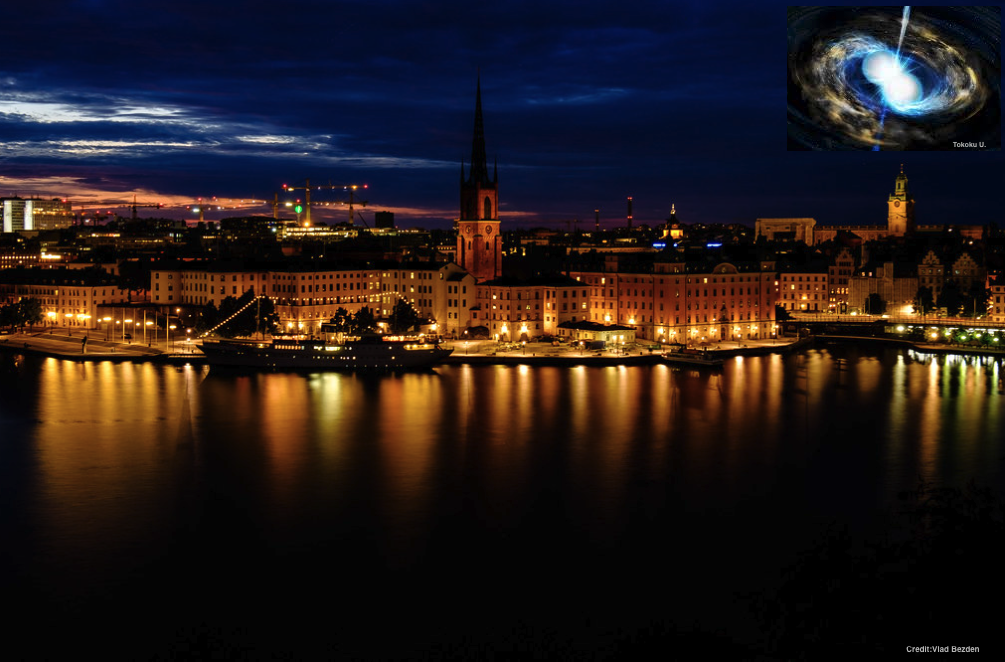Speaker
Description
The atomic properties of r-process elements are predicted to play an important role in determining the electromagnetic emission from kilonovae, which result from the merger of two neutron stars. More specifically, the radiative opacity is an important quantity that determines the flow of radiation through the ejecta and wind material that result from the merger. In this talk, we discuss the calculation of opacities using the Los Alamos suite of atomic physics codes [1]. This suite has been used to generate opacities for elements in the fourth through seventh rows of the periodic tables [2–4], for a variety of kilonova investigations that include sensitivities to changes in mass, velocity, composition and morphology, as well as the construction of grids of emission models [5–9].
[1] C.J. Fontes, H.L. Zhang, J. Abdallah, Jr., R.E.H. Clark, D.P. Kilcrease, J. Colgan, R.T. Cunningham, P. Hakel, N.H. Magee and M.E. Sherrill, J. Phys. B 48, 144014 (2015). [2] C.J. Fontes et al, MNRAS 493, 4143 (2020).
[3] C.J. Fontes et al, MNRAS 519, 2862 (2023).
[4] K. Olsen, C.J. Fontes, C.L. Fryer, A.L. Hungerford, R.T. Wollaeger, O. Korobkin, Yu. Ralchenko, NIST-LANL Opacity Database (ver. 1.2): https://nlte.nist.gov/OPAC, Na- tional Institute of Standards and Technology, Gaithersburg, MD 20899.
[5] R.T. Wollaeger et al, MNRAS 478, 3298 (2018).
[6] R.T. Wollaeger et al, ApJ 880, 22 (2019). [7] W. Even et al, ApJ 899, 24 (2020).
[8] R.T. Wollaeger et al, ApJ 910, 10 (2021). [9] O. Korobkin et al, ApJ 910, 116 (2021).

